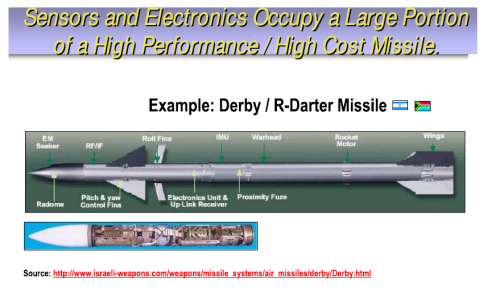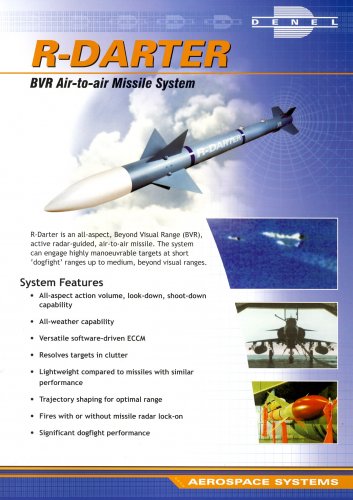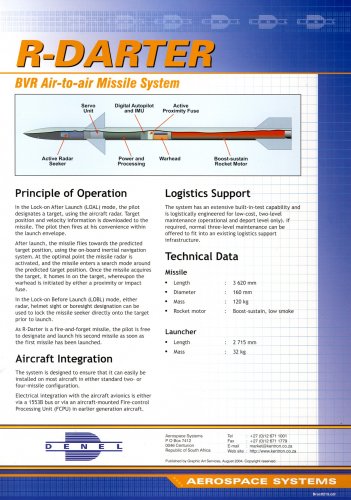I find that missile pretty interesting, in so much that it seems to differ in design choices from most of its contemporaries.
Most missiles of similar class seem to go for tail placed fins for manouvering and some sort of mid body wings or strakes for stabilization and lift.
Derby, however, seems to have reverted to Sparrow configuration in so much that it seems to use fixed rear body fins for stabilization while the front pair of steerable fins, wings actually, serve for lift and maneuvers.
But while Sparrow had its front wings positioned roughly mid-body, Derby has its front wings positioned visibly closer to the front tip of the missile. That would surely have to influence the moment arm, having in mind the center of mass. But while center of mass for sparrow missile (once the fuel was spent) was fairly close by just behind the mid wings. (which were, granted, pretty big) center of mass of fuel-spent derby missile seems to be almost as far from the steering fins as it is on conventional designs like amraam.
My questions are:
1) can anyone deduce some general ideas about advantages and drawbacks of the said aerodynamic configuration?
For example, is it more maneouverable? But causes more drag? Maybe its better at maintaining manouverability from the launch, while the missile is still heavy with rocket fuel?
2) what do those little fins, right behind the front fins, do? they also seem to be present on python 5.
3) do we know anything about derby's rocket motor? Has it been changed compared to python 5? if so, how? Is there any promotional cutout drawing of derby, showing the rough placement and dimensions of its rocket motor?
Most missiles of similar class seem to go for tail placed fins for manouvering and some sort of mid body wings or strakes for stabilization and lift.
Derby, however, seems to have reverted to Sparrow configuration in so much that it seems to use fixed rear body fins for stabilization while the front pair of steerable fins, wings actually, serve for lift and maneuvers.
But while Sparrow had its front wings positioned roughly mid-body, Derby has its front wings positioned visibly closer to the front tip of the missile. That would surely have to influence the moment arm, having in mind the center of mass. But while center of mass for sparrow missile (once the fuel was spent) was fairly close by just behind the mid wings. (which were, granted, pretty big) center of mass of fuel-spent derby missile seems to be almost as far from the steering fins as it is on conventional designs like amraam.
My questions are:
1) can anyone deduce some general ideas about advantages and drawbacks of the said aerodynamic configuration?
For example, is it more maneouverable? But causes more drag? Maybe its better at maintaining manouverability from the launch, while the missile is still heavy with rocket fuel?
2) what do those little fins, right behind the front fins, do? they also seem to be present on python 5.
3) do we know anything about derby's rocket motor? Has it been changed compared to python 5? if so, how? Is there any promotional cutout drawing of derby, showing the rough placement and dimensions of its rocket motor?



